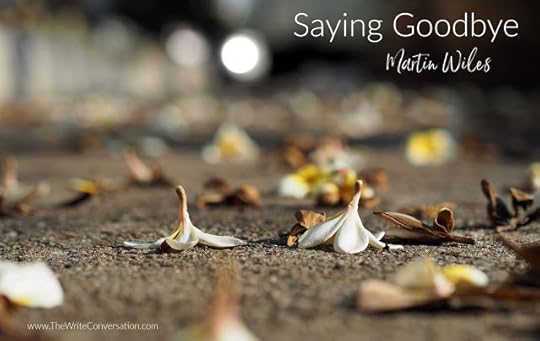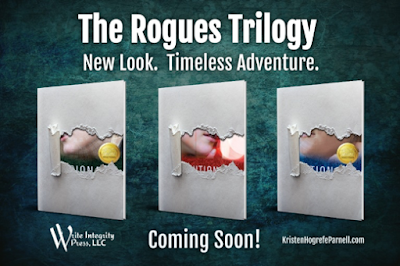Edie Melson's Blog, page 160
June 15, 2021
What Can a Writer Use Canva For?

by Katy Kauffman @KatyKauffman28
I needed a time saver, and Canva became it. More than once.
Do you need to make a meme or a One Sheet? How about a picture slideshow or video about your book? Canva can do all of these. Even the free version. As writers, we can choose from Canva’s templates, stock photos, and video clips to create beautiful graphics and videos to promote our message and our writing.
What’s a perk of the paid version? With a few mouse clicks, you can turn a meme for Facebook into a meme for Pinterest or Twitter, instead of having to create a new meme for each social media site. You can also create a “brand kit” that saves your brand’s fonts and colors.
Whether you have the free version or a paid account, Canva now has software to download to your computer (also called the “desktop app”). You still sign in with your email address and password, but you don’t have to access Canva through your internet browser. The app for mobile devices allows you to create on-the-go, and you can access those designs on your computer.
Here are eight ways Canva is useful to the writer, along with some specific templates I enjoyCreate the following with Canva’s software:
1. Scripture Memes
I love taking a template for a Facebook post and changing the words to be a quote from Scripture. You can also change the font, colors, and pictures to be whatever you want.
If you need a little help deciding on a Facebook post template, type one of my favorites into the search bar—“Warm Browns Fall Inspirational Quotes Facebook Post” or “Poppies in Bloom Facebook Post.” Put your Bible verse in the appropriate box or boxes, and save the graphic as a PNG for the best possible quality. You can repeat the same process for graphics for other social media sites.
2. One Sheets for Your Books or Speaking Topics
I like to use the Resume templates to make One Sheets, especially the one called “Orange and Black Professional Resume.” Delete the boxes you don’t need, and type in your information into the boxes you want to keep. Have fun changing the colors and adding your headshot and book cover. “Speaking Topics” would make a great heading for one of the boxes.
3. A Slideshow of Memes
One of my favorite projects to make on Canva is a slideshow of memes that allows you to share quotes from your book, blog, or speeches. Create a series of memes you’ve made, and put them onto a blank template. Find this template by searching for “Slideshow Video,” and choose the first option which should say “Blank.” You can even add music to the slideshow. It will save as an mp4 file that you can upload to YouTube or other sites.
4. A Video Introducing Your Book
Canva has templates that “hold” a video. These graphics look like memes with decorative elements, and there will be a place to “drop” a video file. Record yourself introducing your book, and then search for a template like the “Pink Polaroid Birthday Facebook Video,” and delete the segments or “pages” you don’t need. (You can change the pink color too.)
5. A Logo for Your Website and Social Media Pages
When I visit a writer’s website, I love seeing their ministry logo in the tab of my internet browser. (How did it get there? I’ll teach that at my ministry’s fall online conference called Enrich.) How can you make a logo for your website or elsewhere? Search the Logo templates on Canva to find one you love. You can upload a design that you made or someone made for you, and add it to the logo.
6. Cover Photos for Facebook, Twitter, YouTube, and WordPress
Don’t stress about how wide to make your cover photos for various social media sites and websites. Select the right Canva template for the site you want, and change the design to your liking. Canva makes it the correct size for you.
7. A Poster for Your Book Signing or Event
Are you going to set up a booth for your book at a conference? Or have a table in the back for a speaking engagement? Use Canva to create a poster in one of three different sizes, including 18” x 24” for a tabletop display.
8. YouTube Thumbnails
YouTube allows you to choose a thumbnail for your videos, but sometimes the three “still” shots they offer as options aren’t flattering. Create your own thumbnail with Canva, and upload it to YouTube when you upload your video.
Did you realize that Canva can do all this? Which of the eight projects would you want to try? Tell us in the comments, and join the conversation!
What Can a Writer Use Canva For - @KatyKauffman28 on @EdieMelson (Click to Tweet)
 If you don’t have a Canva account yet, use my referral link to gain a Canva credit when you make your first design. I’ll get a credit too, and we both can enjoy a “pro” feature like a photo or decorative element for free. Click this referral link to get started and have fun: https://www.canva.com/join/sandbar-parts-frostyKaty Kauffman is an award-winning author, an editor of REFRESH BIBLE STUDY MAGAZINE, and a co-founder of LIGHTHOUSE BIBLE STUDIES. She loves connecting with writers and working alongside them in compilations, such as Feed Your Soul with the Word of God, Collection 1 which is a 2020 Selah Awards finalist.
If you don’t have a Canva account yet, use my referral link to gain a Canva credit when you make your first design. I’ll get a credit too, and we both can enjoy a “pro” feature like a photo or decorative element for free. Click this referral link to get started and have fun: https://www.canva.com/join/sandbar-parts-frostyKaty Kauffman is an award-winning author, an editor of REFRESH BIBLE STUDY MAGAZINE, and a co-founder of LIGHTHOUSE BIBLE STUDIES. She loves connecting with writers and working alongside them in compilations, such as Feed Your Soul with the Word of God, Collection 1 which is a 2020 Selah Awards finalist.In addition to online magazines, Katy’s writing can be found at CBN.COM, thoughts-about-God.com, and three blogs on writing. She loves to spend time with family and friends, talk about art and crafts in her group MY ARTSY TRIBE, and tend the garden in the morning sun. She makes her home in a cozy suburb of Atlanta, Georgia. Connect with her at her blog, WINNING THE VICTORY, and on FACEBOOK and TWITTER.
June 14, 2021
When God’s Ways with My Writing are Not My Ways

Lucinda Secrest McDowell @LucindaSMcDowel
Here is what I had hoped would happen after I hit “send” on my latest book proposal. The editor would almost immediately respond by email:
“Wow! Thank you for choosing us to send this amazing proposal of what we believe will be our next best-selling book! Your manuscript is now on a fast track to publication and attached please find the contract. We look forward to working with you on getting these fabulous words out into the world.”
What actually happened? I am still waiting for a publisher response. Seven months later.
God’s ways are not my ways. No joke. My timing for things (well, at least for good news things) is almost always sooner than what actually happens. God’s timing—which I know to be true from a lifetime of experience—is Perfect Timing though it often seems late or thwarted altogether.
Can you relate? In your current work-in-process, what are your hopes for the outcome? But what seems to be actuallyhappening?
May I lift our eyes a bit today to what God may be orchestrating in the heavenlies? My answer comes straight from God’s Word.
“My thoughts are nothing like your thoughts,” says the Lord. “And my ways are far beyond anything you could imagine. For just as the heavens are higher than the earth, so my ways are higher than your ways and my thoughts higher than your thoughts. “The rain and snow come down from the heavens and stay on the ground to water the earth.They cause the grain to grow, producing seed for the farmer and bread for the hungry. It is the same with my word. I send it out, and it always produces fruit. It will accomplish all I want it to, and it will prosper everywhere I send it.” Isaiah 55.8-11 NLT
Through the prophet Isaiah, God is reminding us that He is God and we are not. His ways are far beyond anything we could imagine! When we see delay, disappointment, and discouragement, He sees opportunity. Not only for our eventual words to serve others, but for us to grow in the process of that journey. When His timing is right—as only the Sovereign Lord ordains—those words based on His Word, will produce with power!
So, I say this to myself, and I say this to you today, dear writing friend,
“Yield yourself to God’s Ways—relinquish your small dreams and fast timing. There will be fruit, but not without a season of planting, pruning, and perseverance. Trust in the slow work of God.”
Then you and I will reap this remarkable benefit of rejoicing in God’s Ways, as our scripture text continues to reveal:
“You will live in joy and peace. The mountains and hills will burst into song, and the trees of the field will clap their hands! Where once there were thorns, cypress trees will grow. Where nettles grew, myrtles will sprout up. These events will bring great honor to the Lord’s name; they will be an everlasting sign of his power and love.” Isaiah 55.12-13 NLT
I want to live in joy and peace. I want to bring honor to the Lord’s name and be a conduit of His power and love.
Lord, I will wait, and I will work. And I will continue to stand in wonder of your goodness and grace in my life. Amen.
TWEETABLEWhen God's Ways with My Writing are Not My Ways - @LucindaSMcDowel on @EdieMelson (Click to Tweet)
 Lucinda Secrest McDowell, M.T.S., is a storyteller and seasoned mentor who engages both heart and mind while “Helping You Choose a Life of Serenity & Strength.” A graduate of Gordon-Conwell Theological Seminary and Furman University, McDowell is the author of 15 books and contributing author to 30+ books. Her award-winning books include Soul Strong, Life-Giving Choices, Dwelling Places, and Ordinary Graces. Lucinda, a member of the Redbud Writers Guild and AWSA, received Mt. Hermon “Writer of the Year” award and guest blogs monthly for ‘The Write Conversation.’
Lucinda Secrest McDowell, M.T.S., is a storyteller and seasoned mentor who engages both heart and mind while “Helping You Choose a Life of Serenity & Strength.” A graduate of Gordon-Conwell Theological Seminary and Furman University, McDowell is the author of 15 books and contributing author to 30+ books. Her award-winning books include Soul Strong, Life-Giving Choices, Dwelling Places, and Ordinary Graces. Lucinda, a member of the Redbud Writers Guild and AWSA, received Mt. Hermon “Writer of the Year” award and guest blogs monthly for ‘The Write Conversation.’ Whether coaching writers and speakers, pouring into young mamas, or leading a restorative day of prayer, she is energized by investing in people of all ages. As a communications teacher, she has served on the faculty of Speak Up Conference, Mount Hermon Christian Writers Conference, Blue Ridge Mountains Christian Writers Conference, Florida Christian Writers Conference, Asheville Christian Writers Conference and co-directs the annual spiritual retreat reNEW – retreat for New England Writing & Speaking. Known for her ability to convey deep truth in practical and winsome ways, McDowell shares words from “Sunnyside” cottage in New England and blogs weekly at WWW.LUCINDASECRESTMCDOWELL.COM
June 13, 2021
Speaking Tips for Authors at Hybrid Events

by Yvonne Ortega @YvonneOrtega1
This article provides three speaking tips for authors at hybrid events. The hybrid is one in which people can attend in-person or online.
The first speaking tip for authors at hybrid events is to prepare for the audience monitors.
You want to see both the faces of the attendees at the live event and the virtual ones The tech crew may set up a small monitor at the front of the stage, a large one in the aisle or at the back of the room.
I spoke on resilience with a small monitor at the front of the stage, a large monitor in the aisle, and one at the back of the room. At my request, a speaker friend watched me with the live audience. Another speaker friend observed me on the virtual event. Afterward, both gave me their feedback.
An excellent speaker taught a series on research at a hybrid event. While she taught at the physical location, five of us watched on Zoom. At the live event, the technician didn’t place the monitor in the right spot. At times, the speaker wrote on the board with her back to us. This occurred during the time of required masks. When she spoke, her words sounded muffled.
Those of us online couldn’t see or hear her. The attendees at the live event also wore masks and observed social distancing. We could barely see them much less hear them. I recommended that everyone speak in a louder volume and that the speaker repeat the questions of the live participants.
The second speaking tip for authors at hybrid events is to prepare for the slide monitors.
The slider monitor would show the PowerPoint, Keynote, or other format of slides. The ideal situation would involve two monitors. One would show the slides. The other would allow the presenter to see the slide notes. Technicians usually set up the slide monitors at the front of the room.
Ask before your arrival if the equipment is set up for Apple or PC products. If a glitch occurs, have a plan B ready. At one event, the technicians couldn't get the slide monitor to work with the speaker’s slide deck. The speaker came prepared with a flash drive of her presentation. I popped it in my laptop, and she presented.
At a virtual event when I spoke on development of a virtual presentation, the meeting host didn’t know how to set up the screen share feature or make me the host. I did both. Learn to do these things on a Zoom tutorial or on Youtube. You’ll feel more confident.
Third, send a written introduction of yourself to the event planner.
Unless you know everyone in the audience, write your introduction. Use a simple, clear font in size 18 or 20. Sound out the pronunciation of your name. You may think your name is easy to pronounce as I once did. However, three adults mispronounced it. Email or call the event planner or session facilitator to confirm that he/she received it. Ask if the person has any questions and let them practice the pronunciation of your first and last name.
Karen Whiting gave me permission to share her experience with an event planner. Although it wasn’t hybrid, the tips apply in recovering from the worst introduction.
An event planner phoned Karen at the last minute to speak for a women's retreat. Karen agreed to speak. She took a hard copy of her introduction based on the topic she would address.
The event planner held the copy of Karen’s introduction in her hand. She waved it as she went through the introductions of the six well-known speakers who canceled. The woman raved about them and repeatedly said, "I know nothing about Karen Whiting."
She never did read Karen’s introduction.
By the end of the weekend, the women said Karen spoke to their needs. Her book sales of about $600 confirmed their receptivity.
Karen told the audience, "I was the seventh speaker. In the Bible, seven is the perfect number. I was meant to be your speaker."
As Shakespeare said, “All’s well that ends well.”
If you attended a hybrid event virtually or in-person, what did you observe?
TWEETABLESpeaking Tips for Authors at Hybrid Events - @YvonneOrtega1 on @EdieMelson (Click to Tweet)
 Yvonne Ortega walks with a small footprint but leaves a giant imprint in people’s lives. This power-packed package is a professional speaker and the author of the Moving from Broken to Beautiful® Series through cancer, divorce, forgiveness, and loss. Learn more at WWW.YVONNEORTEGA.COM
Yvonne Ortega walks with a small footprint but leaves a giant imprint in people’s lives. This power-packed package is a professional speaker and the author of the Moving from Broken to Beautiful® Series through cancer, divorce, forgiveness, and loss. Learn more at WWW.YVONNEORTEGA.COMYvonne speaks with honesty and humor as she shares her life and struggles through presentations that empower women to find peace, power, and purpose through God’s Word.
Yvonne’s background as a licensed professional counselor brings a unique perspective into the heart of women. She’s a speaking and writing coach and the owner of Moving from Broken to Beautiful®, LLC. She belongs to the Advanced Writers and Speakers Association, the Christian Authors Network, the National Speakers Association, and Toastmasters International.
She celebrates life at the beach, where she walks, builds sand castles, blows bubbles, and dances.
June 12, 2021
Saying Goodbye

by Martin Wiles @LinesFrom God
We fought to swallow the lumps in our throat, and we blinked away the tears. Then, we said goodbye.
Our daughter had always been my run-away bride. No man had been able to tame her. Some had come close, but in the end either she or they walked away. As a single mom of two rambunctious boys, she worked hard to provide a good home for them, and my wife and I did the grandparent thing in keeping them five—and sometimes—six days every week so she could work and have a life. For the most part, I provided the only daddy figure they had. I tried to do things with them that busyness and misplaced priorities had kept me from doing with my own children.
One day, she announced she was dating. A nice young man. One we had known since he was a teenager. One I had mentored for several years. We were elated. Within a few months, they were talking marriage. And within a few more months they were engaged and had set the date. Then, COVID-19 hit, and our future son-in-law’s situation at work changed.
Before we knew it, they moved their wedding date forward four months, our daughter put her house up for sale, and they made plans to move to Searcy, Arkansas—our son-in-law’s new place of employment. We were happy about their new opportunities, but sad that we’d be losing our two grandsons (and of course our daughter and son-in-law) to a state eleven hours away.
We counted down the days until their move, pretending it didn’t exist. But it did, and before we were ready, the day arrived. My wife cooked them a nice supper the night before their departure, and we said our goodbyes so we wouldn’t have to early the next morning. My wife cried, and I—trying to be the man who didn’t cry—fought with the tears that puddled in my eyes. The next morning, they dropped off our air mattress they had used for the previous two nights, we said another quick goodbye, and they were off.
Although neither my wife nor I had ever visited Arkansas, we planned to visit within a few weeks before I had to return to school. I had never wanted to drive eleven hours, but suddenly, I did. I had never wanted to visit Arkansas, but now I anticipated the days before we would.
Our small patio townhome is much quieter these days. My wife and I can watch whatever we want on television—or not watch anything at all. Our grocery bill plummeted, and so did my wife’s need to cook. We don’t keep as many snacks in the pantry, and I pick the garden vegetables all alone. No more remote to find. No more dinosaurs and Legos to put up. No more fights to quell. And I don’t have anyone to tell my old family stories to anymore.
Growing up as a preacher’s kid—and then being a preacher myself—I’ve had to say goodbye to many people and places in my lifetime. It seemed I never stayed anywhere long enough to make good friends. Sometimes, I was anxious to move, but most of the time, I loathed it. And every time, saying goodbye—whether to friends or family—was difficult.
But a time is coming when we won’t have to say goodbye anymore. “He will wipe every tear from their eyes, and there will be no more death or sorrow or crying or pain. All these things are gone forever” (Revelation 21:4 NLT).
I don’t know about you, but I look forward to the day John talked about. No more pain. No more sorrow. No more tears. No more saying goodbye to friends or family. An eternity to enjoy each other and the God who loves us and has provided for our salvation.
I hope I’ll see you there…forever.
TWEETABLE
Saying Goodbye - Martin Wiles, @LinesFromGod, @EdieMelson (Click to Tweet)
 Martin Wiles is the founder of Love Lines from God (www.lovelinesfromgod.com) and serves as Managing Editor for Christian Devotions, Senior Editor for Inspire a Fire, and Proof Editor for Courier Publishing. He has authored six books and has been published in numerous publications. His most recent book, A Whisper in the Woods: Quiet Escapes in a Busy World, released in December 2019. He is a freelance editor, English teacher, author, and pastor.
Martin Wiles is the founder of Love Lines from God (www.lovelinesfromgod.com) and serves as Managing Editor for Christian Devotions, Senior Editor for Inspire a Fire, and Proof Editor for Courier Publishing. He has authored six books and has been published in numerous publications. His most recent book, A Whisper in the Woods: Quiet Escapes in a Busy World, released in December 2019. He is a freelance editor, English teacher, author, and pastor.
June 11, 2021
Understanding How Our Emotions Fuel Writing Procrastination

by Beth K. Vogt @BethVogt
Procrastination seems to be a common problem among writers.
If I could, I’d ask you to raise your hands if you procrastinate about writing. I’ll assume the majority of you would admit to ignoring your various deadlines, choosing instead to clean out your junk drawer or to organize your sea glass collection or to read another author’s book that’s languished too long on your to-be-read pile.
I’ll also admit writing this post is an act of procrastination. Don’t get me wrong, I had a deadline to meet for this blog, but I also have a novella deadline. Right now? I put off that project by focusing on writing today’s post.
Sneaky, right?
We could talk about how to stop procrastinating. I could list 5 easy steps or 3 quick tips to conquer procrastination. But as I considered how easy it is for me to put things off—even things I want to do, things I know I need to do—I wondered why.
Why do I procrastinate?
I found an interesting answer to that question in a 2019 New York Times article titled “Why You Procrastinate (It Has Nothing to Do with Self-Control).” In the article, Dr. Fuschia Sirois, a professor of psychology at the University of Sheffield, said procrastination is irrational. Thank you very much! She added, “People engage in this irrational cycle of chronic procrastination because of the inability to manage negative moods around a task.”
Okay … Professor Sirois says we procrastinate because we’re moody.
Sort of.
In the same NYT’s article, Dr. Tim Pychyl, a professor of psychology and member of the Procrastination Research Group at Carleton University of Ottawa, said, “Procrastination is an emotion regulation problem, not a time management problem.”
In other words, certain challenging tasks, such as writing a first draft or meeting a deadline, create negative emotions like anxiety or doubt or frustration. We cope with these unwanted emotions by procrastinating. However, putting off writing only increases our anxiety, doubt, and frustration—creating the “irrational cycle of chronic procrastination” mentioned by Dr. Sirois.
Makes sense to me.
I procrastinate. You procrastinate. But it’s not that we need time management hacks. It’s that we need to understand—and manage—our emotions better.
When the urge to avoid a writing project hits, we need to stop and evaluate what we’re feeling.
Self-doubt? Resentment? Insecurity?
Why do I procrastinate about writing my novella? I’m anxious because I always get interrupted multiple times when I write (and I do mean always). Interruptions frustrate me and cause my creativity to fizzle. Why start writing when I’m going to be interrupted?
So now I understand the specific emotion fueling my procrastination.
Next step? To finish writing this blog post and get back to writing my novella. Yes, I’m anxious, but I can deal with that by putting on my headphones—great way to block out distractions—and announcing, “I’m writing!” to my family. A verbal “Do Not Cross This Line,” if you will.
Anxiety and frustration dealt with. Blog post written. Time to write my novella.
How has learning our emotions fuel our procrastination helped you as a writer?
TWEETABLEUnderstanding How Our Emotions Fuel #Writing Procrastination - @BethVogt on @EdieMelson (Click to Tweet)
 Beth K. Vogt believes God’s best often waits behind the doors marked “Never.” Having authored nine contemporary romance novels and novellas, The Best We’ve Been, the final book in Beth’s Thatcher Sisters Series with Tyndale House Publishers, releasers May 2020. Other books in the women’s fiction series include Things I Never Told You, which won the 2019 AWSA Award for Contemporary Novel of the Year, and Moments We Forget. Beth is a 2016 Christy Award winner, a 2016 ACFW Carol Award winner, and a 2015 RITA® finalist. An established magazine writer and former editor of the leadership magazine for MOPS International, Beth blogs for Learn How to Write a Novel and The Write Conversation and also enjoys speaking to writers group and mentoring other writers. Visit Beth at bethvogt.com.
Beth K. Vogt believes God’s best often waits behind the doors marked “Never.” Having authored nine contemporary romance novels and novellas, The Best We’ve Been, the final book in Beth’s Thatcher Sisters Series with Tyndale House Publishers, releasers May 2020. Other books in the women’s fiction series include Things I Never Told You, which won the 2019 AWSA Award for Contemporary Novel of the Year, and Moments We Forget. Beth is a 2016 Christy Award winner, a 2016 ACFW Carol Award winner, and a 2015 RITA® finalist. An established magazine writer and former editor of the leadership magazine for MOPS International, Beth blogs for Learn How to Write a Novel and The Write Conversation and also enjoys speaking to writers group and mentoring other writers. Visit Beth at bethvogt.com.
June 10, 2021
Book Marketing Secrets Every Author MUST Know!

by Edie Melson @EdieMelson
Over the course of my career I have published through big publishers and through smaller, traditional presses. Of course there are differences between what support a big and small publisher provides. But—and we all need to wrap our brains around this one truth—our responsibility as the author is fairly consistent. Today I’m going to share 7 book marketing secrets I’ve learned from experience, and some I’ve learned by watching other authors.
7 Book Marketing Secrets
1. Your audience of readers is interested in connecting with YOU, not your publisher. Readers don’t care if you’ve landed a big deal with a big publisher or a small deal with a small one. What they want is good content and a place to connect with you. Part two of this is the fact that your readers want genuine and authentic interaction. If your readers follow you on social media and then discover that it’s not really you—only an assistant or lackey—interacting with them, they’ll feel betrayed. For newer writers who aren’t starting with huge audiences, this means you’re going to have to be on social media consistently four to five days a week. For those who are already big names, you may have to cut back on the amount of interaction so you have time to keep it genuine.
2. Don’t use the wrong URL for your book on Amazon. Most of you have probably read about the fact that Amazon sometimes deletes legitimate reviews. Part of that problem is the long URL many authors include in their promo and social media information.
This is the WRONG link: https://www.amazon.com/Youre-Weary-Embracing-Exploring-Creativity/dp/1946708267/ref=tmm_pap_swatch_0?_encoding=UTF8&qid=1535940502&sr=1-1
https://www.amazon.com/Youre-Weary-Embracing-Exploring-Creativity/dp/1946708267?crid=MY1B1SLG3BUJ&keywords=soul+care+edie+melson&qid=1537275941&sprefix=soul+care%2Caps%2C150&sr=8-1-fkmrnull&ref=sr_1_fkmrnull_1
This is the RIGHT link: https://www.amazon.com/Youre-Weary-Embracing-Exploring-Creativity/dp/1946708267/
https://www.amazon.com/Youre-Weary-Embracing-Exploring-Creativity/dp/1946708267?
You see, everything from ref on is a special code that allows Amazon to track when this link was shared. If I post the wrong link, it looks like all my reviews came from the same source and could have been paid for. There are other things coded into the longer part of the link, but trust me when I say it will cut way back on number of reviews Amazon lets you keep.
3. A small group of readers dedicated to helping you is an author’s secret weapon. For the first time, I assembled a launch team. (Here are the links to two posts I shared – Street Teams for a Book Launch and How a Launch Team Helped Promote MyBook ) In seven weeks, this team of twenty-eight helped my book visibility by giving me over 200,000 social media impressions. I did my best to make the launch not about me, but about what God was doing. I stayed in weekly contact with them, and provided a mini-study on praying for our children. The keys to a group like this are:
Regular—genuine—contactValue for themEasily shareable content (my publisher generated memes and tweetables to take the work out of sharing for them)
4. Your readers don’t know the publishing biz so you have to let them know how to help you. Readers aren’t writers. They aren’t aware of how important reviews are. As a matter of fact, most of them think only professionals write reviews. If you want your readers to write reviews, you’re going to have to ask for them and then provide instruction on how to do it. NOTE: keep it simple. Don’t haunt them with requests that make it seem like they’re back in school and being asked to write a book report.
5. Giveaways make a difference. A gift basket with swag that you can share on social media, a drawing at a book signing, and extra downloads when they share or order your book will provide extra incentive. These don’t have to break the bank. I made a bunch of hand-beaded bookmarks for my book launch at our local Barnes & Noble and they were a huge hit—and helped sell a lot of extra books.
6. For better numbers, keep your interviews relevant to what’s going on. For instance, in 2016, While My Child is Away released right before school started back in the fall. I had great response when I sent out interview requests when I tied it to the time of year. I used this hook: When I was growing up, back-to-school was a time of excitement. In today’s climate, it can be a time of anxiety—for parents and children. I have a book that addresses how prayer can bring peace in times of stress.
7. Don’t forget the pictures. We’ve all heard the saying, A picture is worth a thousand words. There’s a reason—it’s true. Take pictures of yourself signing the contract, celebrating when you turn in your manuscript, getting a copy of your ARC, and especially that box of author copies. These things build momentum and enthusiasm. Your readers begin to anticipate what’s coming and cheer you on as a heroine. After the book arrives, keep the pics coming. Take shots of book signings, book tables at conference, where ever you happen to be. Always share these on social media.
And especially take pictures when your book is in stores and libraries. Then go one step further—TAG THE STORE IN THE PICTURE AND SOCIAL MEDIA POST. This is free advertising for them and they remember the authors who do this.
These are the things that I’ve learned about promoting and launching a book. I’d love to know what you’ve learned. We’re always better together!
Don’t forget to join the conversation,Blessings,Edie
TWEETABLE7 Book Marketing Secrets Every Author MUST Know - @EdieMelson (Click to Tweet)
 Edie Melson is a woman of faith with ink-stained fingers observing life through the lens of her camera. No matter whether she’s talking to writers, entrepreneurs, or readers, her first advice is always “Find your voice, live your story.” As an author, blogger, and speaker she’s encouraged and challenged audiences across the country and around the world. Her numerous books reflect her passion to help others develop the strength of their God-given gifts and apply them to their lives.Connect with her on her website, through Facebook, Twitter and on Instagram.
Edie Melson is a woman of faith with ink-stained fingers observing life through the lens of her camera. No matter whether she’s talking to writers, entrepreneurs, or readers, her first advice is always “Find your voice, live your story.” As an author, blogger, and speaker she’s encouraged and challenged audiences across the country and around the world. Her numerous books reflect her passion to help others develop the strength of their God-given gifts and apply them to their lives.Connect with her on her website, through Facebook, Twitter and on Instagram.
June 9, 2021
The ABC’s of Newspaper Writing, Part One

by Julie Lavender @JLavenderWrites
A wealth of sayings about “old news” abounds, but the truth is, newspaper outlets need fresh content on a daily basis. Or, at least as often as the newspaper comes out in your neck of the woods.
And that means, as a freelancer, you have many opportunities to gain writing credits by contributing news articles, lifestyle stories, and much more to your local newspaper publication.
To help you learn the lingo of the newsroom, commit these definitions to your memory:
Above-the-fold – the first story of the newspaper, on page one, above the horizontal fold of the newspaper and just below the name of the newspaper. Typically, the article “above the fold” is the most important news of the day or a prominent story about a well-known community member or institution. (I still remember my first, above-the-fold story, as a freelancer!)
AP - the abbreviation for Associated Press. The AP is a non-profit news agency company. Most local newspapers include some AP-written content in their papers for national and global headlines.
Art only – a photograph with an explanatory caption that does not have an accompanying story.
Assignment – a story given to a reporter to cover.
Banner – a headline on the first page, written in large, bold font and extending from one side of the paper to the other.
Bump – to move a story to another location in the newspaper or to another day.
Byline – the writer’s name, printed at the top of the story, following the headline.
Copy – all material turned in to an editor for publication that includes the written story and the accompanying photographs
Cutline – sometimes called a ‘caption,’ the cutline is the information beneath a photograph that describes it. The freelancer is responsible for supplying the information about the photograph, unless a newspaper staff photographer takes the picture.
Dateline – the word at the beginning of the story that tells the location or origin of the story.
(Believe it or not, ‘dingbat’ and ‘dummy’ are newspaper terms, but I’ll let you curious ones look those up in all your spare time!)
Ear – the corner at the top of the front page, left side or right side. Brief news blurbs are included here, like weather-related news or a mention of a special feature included in the newspaper for that day.
Feature – a story with more of an entertainment value, rather than news value. (Most of my faith-based stories fit in this category. I’ve shared many stories about God’s work in a particular person in the community as a feature article.)
Flag – the newspaper’s name on the first page.
Folio – the information printed on the paper that includes the date and page number (and includes the price of the paper on page one).
Gutter – the margin between inside, facing pages that includes the vertical fold of the paper.
Headline – the title of a newspaper story.
Inverted pyramid – the placement of the most important parts or facts of a story in the first paragraph or two and the remaining parts of the story written in descending order of importance.
Jump – to continue a story to another page of the newspaper.
Kill – to take out part of a story, usually because of limited space, or to eliminate the story altogether.
Lead (or lede) – the first sentence or opening paragraph of an article that summarizes the story and grabs the readers’ attention.
Masthead – the blurb that states the title of the paper, address of the newspaper office’s physical location, and publisher’s ownership info, and often includes subscription prices and pertinent phone numbers for each department of the newspaper. The masthead is most often found on page two of the paper.
Morgue – the area of the newspaper office where back issues of the paper are kept.
Newsprint – the paper on which newspapers are printed.
Nut Graf – short for “nut paragraph” and means the summary paragraph that explains “in a nutshell” what the story is about.
Obit – short for obituary.
Op-ed – a page opposite of the editorial page where community members can have their opinions presented through guest writings. (‘Editorials’ are articles that represent the opinion of the editor and/or the newspaper on a particular subject.)
Orphan – part of a word that carries over to a line by itself.
Press Run – total number of copies printed for an edition of the newspaper.
Pullout – a sentence or two pulled from a story, enlarged, and placed at the top of the story to draw readers’ attention.
Put the Paper to Bed – that moment when the newsroom signs off on all the pages and the newspaper goes to press.
Quarterfold – a newspaper insert with some sort of extra material, like a television guide that is sometimes included, or in the case of my newspaper, a once-a-month insert called MOMents that contains feature stories pertaining to moms and women. The insert gets its name because of the size – a standard newspaper is folded into quarters with a fold on the left side such that it reads like a “mini” newspaper.
Release – sometimes called a “press release.” Information about a particular event or person given in advance to a newspaper by the source of the news.
Slant – the angle of a story.
Source – the person, book, survey or other outlet that supplies information about a story.
Spin – a method of writing a story to produce a desired interpretation
Stringer – a part-time reporter; also called a “news correspondent.”
Typo – a mistake made during the production of the story (that most reporters blame on those that do the layouts of the paper!!)
UPI – abbreviation for United Press International. AP and UPI are the two major international sources of news stories for newspapers.
Evergreen – a story that can run in a newspaper at any time and be pertinent; a timeless or perennial article
Widow – a word or paragraph that carries over to the top of the next column or a single word at the end of a paragraph left on a line by itself.
Wire Services – the collective term for news-gathering agencies that gather and disseminate news to subscribing newspapers. AP and UPI are two forms of wire services.
Extra – a term from the ‘old days’ of newspapers that meant a special edition of a newspaper printed for breaking news. Most newspaper agencies can no longer afford to print ‘extras,’ and with online services, the need is no longer there, either.
Yellow journalism – fake or sensationalized news.
Zoned Edition – an edition printed for a specific area that includes more localized news or advertising.
And there you have it! Some lesser-known bits of jargon and some commonly-known terms, too, to keep you in-the-know for newspaper writing! If you’re a journalist, share a recent God-story you wrote for your newspaper. And if you’re not, now that you have the A B C’s of Newspaper Writing, try your hand at submitting a stringer story today!
(And, if nothing else—maybe you learned a word or two for a Jeopardy solution or crossword puzzle answer!)
TWEETABLEThe ABC’s of Newspaper Writing, Part One - @JLavenderWrites on @EdieMelson (Click to Tweet)
 Julie Lavender, author of 365 Ways to Love Your Child: Turning Little Moments into Lasting Memories (Revell), has written close to 1000 newspaper articles. Connect with Julie on social media—she’d love to help you earn writing credits by submitting to your local paper!
Julie Lavender, author of 365 Ways to Love Your Child: Turning Little Moments into Lasting Memories (Revell), has written close to 1000 newspaper articles. Connect with Julie on social media—she’d love to help you earn writing credits by submitting to your local paper!
June 8, 2021
8 Ways to Equip Yourself for the Writing Journey

by Edie Melson @EdieMelson
Stephen King once said, “Life isn’t a support system for art. It’s the other way around.”
I'd like to go one step further and add that choosing the writing life isn’t a choice for the faint of heart. If you’re serious about having a career in publishing, you’re going to need some tools to equip yourself for the writing journey. Beyond that, you’re going to have to make some decisions about how you spend your time. I did. And I haven’t regretted a moment of it.
Life is a series of small decisions that link together as a journey toward your goal.
So what is your goal? Do you want to be published, have a career filled with multiple books? Or are you hoping to become a full-time freelance writer or editor? Any of those are going to take time and commitment.
Then you’re going to have to decide right now if you’re willing to pay the price.
1. Writing is done alone . . . by yourself. It’s just not a group activity. You’re going to have to commit to considerable time spent one-on-one with your computer, banging out words.
2. Writers need a team . . . I know I said it’s done alone, but you still need a support system. We live in our heads. Something considered abnormal by the majority of the world’s population. We need people around us who understand the frustration and the exultation that comes with writing.
3. Writing is easy . . . mastering the craft is hard. It takes time and study to do it with excellence. You’ve got to be willing to put in the time.
4. Writers need drive and determination . . . most of all. We need it a whole lot more than they need talent. See the bullet point above. We can master the craft if we work at it. It’s the work-at-it part that’s hardest.
5. Writing is political . . . yes, I'm going there. I know, this one may not make me popular, but it’s true none-the-less. In this business, it’s important who you know. You need to be networking, online, locally, and at conferences.
6. Writers need to believe in themselves . . . no matter what. Sometimes an internal sense of I’m on the right path is the only thing that stands between success and failure.
7. Writing is a mind game . . . yes you write alone, I'm not changing #1. But I forgot to mention those voices that take up residence in your head when you make the commitment. You’ll hear things from inside your head like this. This is awful, why do you even bother? or Nobody want to read this, just quit.
8. Writers need to set priorities . . . and then stick with them. If you decide to write every Saturday morning, then do it. It doesn't matter if the house is a wreck before (or after if hubby is in charge of the kiddos). Honor your commitment to yourself!
These are the top eight things I’ve needed for my writing journey. What are some things that you’ve had to bring you success?
Don’t forget to join the conversation!
Blessings,
Edie
TWEETABLE
8 Ways to Equip Yourself for the #Writing Journey - @EdieMelson (Click to Tweet)
 Edie Melson is a woman of faith with ink-stained fingers observing life through the lens of her camera. No matter whether she’s talking to writers, entrepreneurs, or readers, her first advice is always “Find your voice, live your story.” As an author, blogger, and speaker she’s encouraged and challenged audiences across the country and around the world. Her numerous books reflect her passion to help others develop the strength of their God-given gifts and apply them to their lives.Connect with her on her website, through Facebook, Twitter and on Instagram.
Edie Melson is a woman of faith with ink-stained fingers observing life through the lens of her camera. No matter whether she’s talking to writers, entrepreneurs, or readers, her first advice is always “Find your voice, live your story.” As an author, blogger, and speaker she’s encouraged and challenged audiences across the country and around the world. Her numerous books reflect her passion to help others develop the strength of their God-given gifts and apply them to their lives.Connect with her on her website, through Facebook, Twitter and on Instagram.
June 7, 2021
5 Things to Make Your Story Sing

by Cindy K. Sproles @CindyDevoted
Most everyone has a story and believe it or not, the majority can tell their story beautifully. The problem comes when the translation of the story hits the page.
I once had a young man sitting in an appointment with me who told me about his story. I was enthralled. It was full of adventure, intensity, and fun, so I asked him to send it to me so I could forward it to our fiction editors. When the manuscript arrived I nearly fell out of my seat. It was so poorly written that I hardly recognized it as the same story he’d captivated me with at the conference.
The problem was, all the elements this gentlemen used to “tell” me the story, were missing when he wrote it down. I learned quickly many can tell a story but few can actually write it well. This led me to research a few details about storytelling that writers need to grasp hold of to make a well-rounded and interesting story—one that sings on the page as well as it does when spoken.
1. Passion and excitement: Any good storyteller can speak their story with passion and excitement. The inflection of their voice, the tones, the highs and lows, the pacing—set the story up to draw us in and not let us go. Learning to add this same passion into the written story is equally as important. How do you capture passion? You have to love your story. When I begin a novel, I jot down the things about my story that brings me joy, excitement, anger, sadness, then I make sure I include these things in my story. If I find myself telling a portion of the story to friends and my voice raises in one spot, I have to note that so that I can write the emotion of that moment into the story. I’ve heard it said that a good writer, writes as they talk. I agree to some extent. I think what the speaker meant by this was grabbing hold of the things that brings emotion, inflection, and excitement and making sure it hits the page. Find the passion in your story and write that passion.
2. Touch the senses: And by that, I mean touch every single one. Seeing, hearing, taste, smell, touch. When a writer pings these senses in every chapter of their story, suddenly the reader “sees” the story in 3-D instead of reading a flat plot or character. Imagine the pages of your book laying flat on the table and a reader simply breezing through each page. Then imagine the pages of your book standing upright from the page and the characters, scenery, moments, stepping off the page and walking around in front of the reader. This happens when you allow your readers to experience your story rather than simply read it. When you touch each sense for the reader, they can become an active participant in the story. Consider them an extra in the movie version. They’re walking by the action seeing and feeling every moment. This is when a storyteller finally learns to write a good story. Of course, plot and characters mean a lot but hitting those senses for the reader takes an okay story and elevates it a notch.
3. Angst and adventure: A must. No exception. The first thing that drives a story is angst. Issues. Problems. The more a character experiences the more a reader remains glued to the story. Think of angst as a roller coaster where the reader starts at the top of the coaster staring down the giant incline. Then the ride begins. Down they go to a resolution and just as we think they are through that one, we hit a curve—a steep curve that climbs up to more angst and problems, then down we go again. Leave your reader with that “stomach in the throat” feeling over and over. As your characters work their way through their problems, add in the adventure. There is an adventure in every incident in our lives. It may not always be joyful, but I guarantee there is an adventure. It’s up to you to open your eyes and imagination wider and see it, then write it. Readers love watching a character maneuver through life’s difficulties. They love the guesswork of how the character will escape or resolve, so give it to your reader. Remember, life is not boring. When you begin to pick apart your character and the situations you put them in, you’ll find the underlying adventure.
4. Write memorable characters: And not only write them memorable but make them so real that your reader leaves saying they felt like they knew this character personally. Oh, what a joy that is when a reader loves your characters like their family. This means listing the attributes you want each character to have. What do they like, dislike? What are their favorite places to go? Favorite foods? Do they like animals? What upsets them and drives them to anger? Let your characters be real. Multi-dimensional. There is not a person alive who is truly boring. (Well, maybe one or two but when you look at even those boring folks and their attributes, I guarantee you’ll find unique and interesting facts about them.) The same goes for your characters. By the same token, there is no perfect character. If your character doesn’t have a serious flaw, one that gets in their way at times, then your reader doesn’t believe your character is real. Those little details make a story meaty. Write characters that stick in the minds of your readers, and make their situations and solutions so real, that weeks later your readers are still reeling over them. You can do this. Trust me. You just have to dig deeper.
5. Never give your character real peace: Your characters may have a temporary respite but in the background, there are always skeletons that hide in the closet. You know this is true in your own life. There are always things you never want others to know about you and though you may not think about it daily, it’s there to haunt you. Give resolve but never give full peace.
These are just a few things that will make your story sing. Practice looking deeper than the surface of your story. Dig. You’ll find amazing things you never expected and your storytelling skills will thrive.
TWEETABLE
5 Things to Make Your Story Sing - @CindyDevoted on @EdieMelson (Click to Tweet)
 Cindy K. Sproles is an author, speaker, and conference teacher. She is the cofounder of Christian Devotions Ministries and the executive editor for christiandevotions.us and inspireafire.com. Cindy is the lead managing editor for SonRise Devotionals and also Straight Street Books, both imprints of LPC/Iron Stream Media Publications. She is a mentor with Write Right and the director of the Asheville Christian Writers Conference held each February at the Billy Graham Training Center, the Cove, Asheville, NC. Cindy is a best selling, award winning novelist. Visit Cindy at www.cindysproles.com.
Cindy K. Sproles is an author, speaker, and conference teacher. She is the cofounder of Christian Devotions Ministries and the executive editor for christiandevotions.us and inspireafire.com. Cindy is the lead managing editor for SonRise Devotionals and also Straight Street Books, both imprints of LPC/Iron Stream Media Publications. She is a mentor with Write Right and the director of the Asheville Christian Writers Conference held each February at the Billy Graham Training Center, the Cove, Asheville, NC. Cindy is a best selling, award winning novelist. Visit Cindy at www.cindysproles.com.
June 6, 2021
3 Media Tools for Writers Working Smarter, Not Harder

By Kristen Hogrefe Parnell @khogrefeparnell
We know that the writing life isn’t just about writing. Regardless of the publishing route we choose, we writers are largely responsible for marketing and sharing our books with others.
Most of you aren’t graphic designers or degree-holding marketers, and neither am I. Today, I want to share three tools that can help you work smarter, not harder—so you have more time to do what you love: writing.
#1: Canva
I’m starting with Canva because I use this platform most. In fact, I use it so much that I actually pay for the business plan. However, the free version offers the basic features most people need, so you certainly don’t have to upgrade.
In a nutshell, Canva is graphic design for dummies (and I include myself in that category). Canva offers pre-designed templates for almost any social media platform. Need an Instagram post? No problem! Want to design a Facebook page banner? Canva has you covered.
With countless free photos, pre-designed templates, customized text, and easy personalization, Canva makes you feel like a professional without a graphics degree. If you want to see some examples in action, I design almost all my blog covers in Canva. I also created the banners on my Facebook or Twitter sites using Canva.
To get started, visit canva.com.
#2: Book Brush
At first, I thought Book Brush was just Canva’s second cousin, but the more I use Book Brush, the more I appreciate the unique benefits it offers writers. While it has many of the same features as Canva (though I feel Canva is simpler for basic design needs), Book Brush has some flashy features Canva doesn’t have, including Community Templates that let you search by Genre, Platform, Description, or 3D images. To use these templates, you simply upload your book cover and insert it into the staged book or eBook cover in the pre-made design.
My favorite feature that sets Book Brush apart is Instant Mockups. This feature lets you take your one-dimensional cover and add it to 3D templates. Book Brush even has “cover reveal” templates, which helped me create this graphic.

With the limited plan, you receive fifteen free downloads before you have to upgrade. You can also access select Instant Mockups for free as well.
To get started, visit bookbrush.com.
#3: Lumen5
Lumen5 is an online video maker that lets you easily build videos with its drag-and-drop feature. With a simple click and drag, you can add free creative commons images, apply text, and even add free audio tracks to your slides. Using the free version, I’ve used Lumen5 to create simple but crisp book trailers, and you can view an example for my novel The Revisionary.
As with most free programs, there are also upgrade options, but depending on your needs, the free versions are usually a perfect place to begin.
To get started, visit lumen5.com.
Those are three of my top media tools that I use as a writer. As a disclaimer, I’m not sharing about them to get a kick-back, but because I think they might be helpful to you too. Do you have any other favorite tools? Please mention them in the comments.
TWEETABLE3 Media Tools for Writers Working Smarter, Not Harder - @KHogrefeParnell on @EdieMelson (Click to Tweet) Kristen Hogrefe Parnell writes novels, learns something new every day, and runs for pizza. An educator and mentor, she teaches English online and is an inspirational speaker for schools, churches, and podcasts. Her young adult dystopian novels, The Revisionary and The Reactionary, both won the Selah for speculative fiction, and she recently signed with Mountain Brook Ink for a new romantic suspense series, coming December 2022. Kristen and her husband live in Florida and enjoy sharing their lake home with family and friends. She blogs at KristenHogrefeParnell.com where she challenges readers to find faith in life’s everyday adventures.
Kristen Hogrefe Parnell writes novels, learns something new every day, and runs for pizza. An educator and mentor, she teaches English online and is an inspirational speaker for schools, churches, and podcasts. Her young adult dystopian novels, The Revisionary and The Reactionary, both won the Selah for speculative fiction, and she recently signed with Mountain Brook Ink for a new romantic suspense series, coming December 2022. Kristen and her husband live in Florida and enjoy sharing their lake home with family and friends. She blogs at KristenHogrefeParnell.com where she challenges readers to find faith in life’s everyday adventures.



